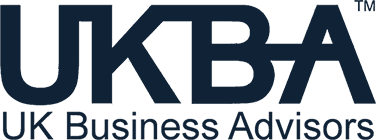This is article 2 in our series of 3

There are 3 layers of understanding that you have to achieve, and I will be covering these in 3 articles covering:
- Some basic tips
- What are the key figures in your accounts?
- Digging deeper with good analysis
What are the key figures in your accounts?
Despite the advent of a plethora of accounting software (Sage, Xero, QuickBooks et al)many SMEs still do not have accurate management accounts and rely on their annual accounts to tell them how well or badly they are doing. Those who recognise and/or use the basic tips referred to in the first article will at least have some idea of how they are doing but understanding some part of your accounts is essential. Everybody knows what sales are but does increased sales mean increased profits. You would hope so but sadly that is not always the case.
For you to make profits you have to ensure your income exceeds your expenditure (and in the event that it does, set aside a further sum of money to pay your tax). Typically, your profit and loss account will be set out in two ways. If you make goods or buy and sell them, you will have something that looks like this:
| Sales | 100 | |
| Less Cost of sales | ||
| Opening Stock | 20 | |
| Add Purchases | 40 | |
| Less Closing stock | (15) | |
| Cost of sales | 45 | |
| Gross Profit | 55 |
If you manufacture your own goods, then cost of sales will include labour costs so your Gross Profit calculation may look like this
| Sales | 1000 | |
| Less Cost of sales | ||
| Opening stock and work in progress | 200 | |
| Add Purchases of Raw Materials | 200 | |
| Manufacturing Labour costs | 200 | |
| Less Closing Stock and Work in Progress | (150) | |
| Cost of sales | 450 | |
| Gross Profit | 550 |
Otherwise, your accounts might look something like
| Sales | 100 | |
| Less Costs | ||
| Wages | 30 | |
| Directors Remuneration | 15 | |
| Motor expenses | 8 | |
| Travel expenses | 2 | |
| Office expenses | 15 | |
| Total Costs | 70 | |
| Net Profit before tax | 30 |
Whichever way the accounts are set out there is lots of useful information you can get in summary form by comparison with either, previous months, previous years of your budget which can then give you some pointers in how you are doing.
Firstly, there is the old favourite, Gross Profit percentage which is used in manufacturing or businesses that buy and sell goods. The gross profit percentage is calculated by taking the gross profit, multiplying by 100 and dividing by sales. Thus, in the gross profit calculations above the gross profit is 55%. You can then compare that to either previous performance or budget and get a warning if it is not as you expected. I say warning because even if it is significantly better than expectations it might suggest that there is an error somewhere in the accounting and either costs are understated, or sales overstated
You might want to look at labour costs as a percentage of the cost of sales in a manufacturing company. In the example above labour is just over 44 % of the cost of sales. Is that what you were expecting? If it’s worse why? Are you incurring extra overtime costs to meet orders or are those doing the work not as efficient as they might be? If it’s better than expected but gross profit is not as good does that mean an issue with wastage of raw materials or have material costs gone up unexpectedly.
You are now starting to see how the figures in the accounts are capable of interpretation in several ways but to do so you need to have a comparison with either the past or expectations against budget.
Finally with costs generally, you need to understand that some costs are fixed, and some are variable, and this can again help manage expectations. Unless you are expanding rapidly, costs such as rent and rates, insurance, lease agreements for equipment, printing and stationery and office wages( as opposed to manufacturing labour are likely to be fixed in nature, the same each month or each quarter subject of course to inflation whereas other costs may vary depending on the sales performance of manufacturing efficiency like manufacturing labour, raw materials, motor and travel expenses(particularly if you employ sales staff) and likewise telephone for the same reasons. This means again that for variable expenses, if sales increase, then you would expect an increase in some of these costs, though the increase may come before you see the impact on sales. But at least you will be aware of abnormal cost increases to start looking at reasons and in the case of no increase or a decrease when you might expect another reason to investigate.
These questions will at least prompt you to look at unexpected changes. In the next article, we will examine the need to drill down for more accurate information.
